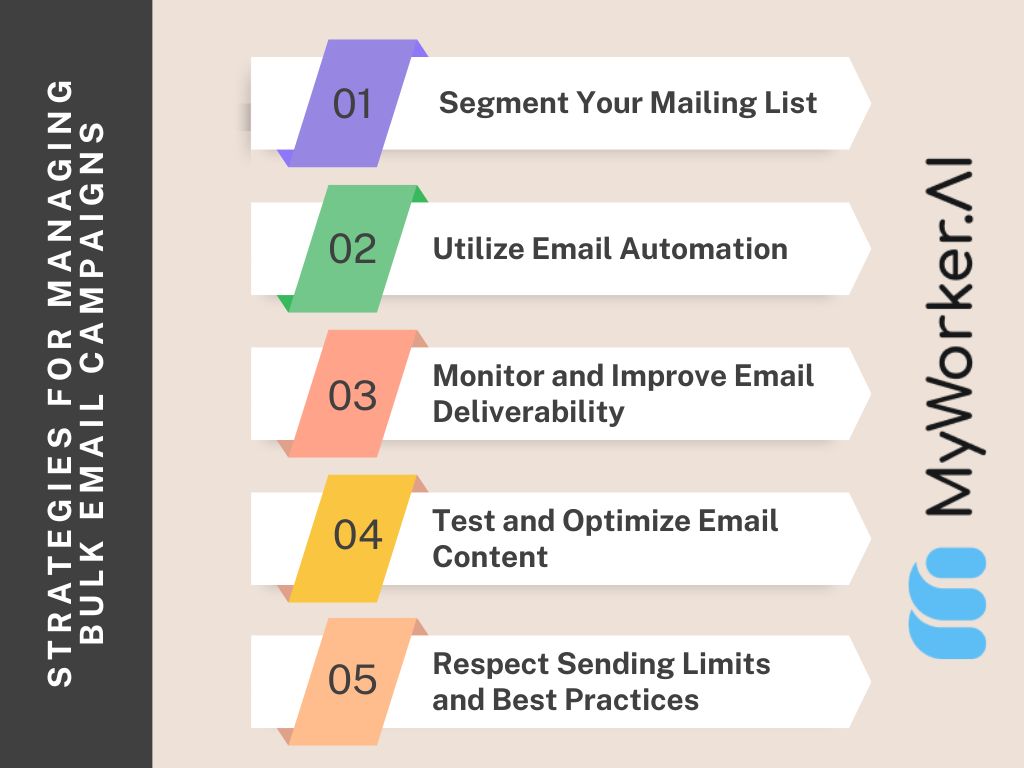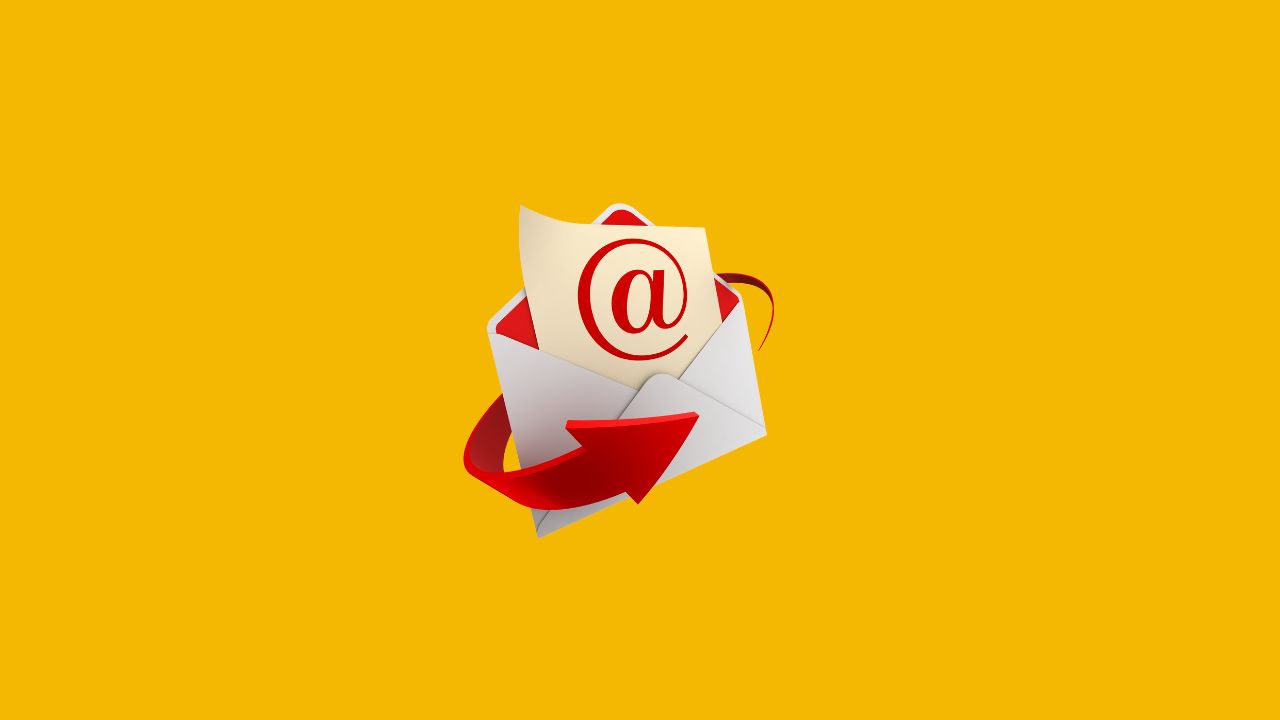Do you find yourself hitting roadblocks with outbound limits on Google? Imagine the frustration of being restricted when you’re trying to access vital information or reach out to potential leads.
🔍 In our blog, ‘Unlock the Secrets: Overcoming Google’s Outbound Limits with AI,’ we delve deep into this challenge and provide innovative solutions to empower you in the digital realm.
Explore how AI technology can revolutionize your approach to navigating Google’s outbound limits, enabling you to soar past restrictions effortlessly.
By combining cutting-edge AI insights with practical strategies, you’ll discover how to navigate these barriers effectively and make the most out of your online pursuits.
Ready to elevate your digital game and break free from constraints? Join us on this enlightening journey as we uncover the secrets to overcoming Google’s outbound limits with the power of AI.
Short Summery
- Understand Google’s email-sending limits and their impact on your outreach efforts.
- Learn how Google Workspace accounts influence your email campaigns and deliverability.
- Discover how to leverage AI solutions to enhance email deliverability and response rates effectively.
- Implement strategies for managing bulk email campaigns, targeting potential buyers, and adapting to Google’s email policies.
1. Understanding Google’s Email-Sending Limit
When it comes to email outreach, one crucial aspect that every marketer should pay attention to is Google’s email-sending limit. By understanding and abiding by these limits, you can ensure better deliverability and avoid potential pitfalls in your email campaigns.
Factors Influencing Email-Sending Limits
Google Workspace Account vs. Free Gmail Account: Users with a Google Workspace account typically have higher sending limits compared to those using a free Gmail account.
Daily Sending Limit: Google imposes a daily sending limit to prevent abuse and ensure a positive user experience for all users.
Maximum Number of Emails: There is a maximum number of emails that can be sent per day, depending on various factors such as account reputation and user activity.
Navigating the Changes in Email Deliverability
In light of significant changes by Google in their email-sending policies, marketers need to adapt their strategies to maintain a high reputation and avoid errors messages related to exceeding sending limits.
“Adhering to email-sending limits is essential for maintaining good deliverability and user experience.”
Best Practices for Managing Email-Sending Limits
- 1. Segment Your Mailing Divide your audience into smaller segments to avoid hitting sending thresholds.
- 2. Monitor Your Open Rates: Keep an eye on your open rates and adjust your email frequency accordingly.
- 3. Utilize a Reliable SMTP Service: Consider using a reputable SMTP server for improved email deliverability.
- 4. Engage with External Recipients Carefully: Be cautious when sending emails to external recipients to maintain a positive sender reputation.
💡 key Takeaway: Understanding Google’s email-sending limits is crucial for optimizing email campaigns and achieving higher deliverability rates.
2. Impact of Google Workspace Accounts on Email Campaigns
With the increasing reliance on email as a primary communication tool in the digital age, understanding the impact of Google Workspace accounts on email campaigns is crucial for optimizing your outreach strategy. Let’s delve into how Google Workspace accounts influence your email campaigns and explore strategies to navigate through potential challenges.
1. Google Workspace Account Setup
Google Workspace, formerly known as G Suite, offers a range of tools and features to streamline email communication for businesses. Setting up a Google Workspace account is the first step towards enhancing your email campaign efficiency. Ensure your account is configured correctly to maximize deliverability and avoid potential issues with sending limits.
2. Email Sending Limits and Deliverability
Google Workspace accounts have specific daily sending limits to prevent spam and maintain a high reputation for their email service. Understanding these limits is crucial to avoid hitting a sending cap, which can disrupt your email campaign. Focus on improving email deliverability by following best practices and monitoring your sending volume regularly.
3. Impact on Open Rate and Response Rate
The reputation of your sending domain, influenced by your Google Workspace account, plays a significant role in email open and response rates. Maintaining a good reputation by adhering to best practices and delivering valuable content can improve engagement with your email campaigns. Monitor metrics closely to gauge the impact of your Google Workspace account on recipient behavior.
4. Strategies for Effective Outreach
To overcome the challenges posed by Google Workspace account limitations, consider implementing segmented email campaigns, personalized messaging, and testing different sending frequencies. Tailoring your outreach strategy to align with the capabilities of Google Workspace can optimize your campaign performance and enhance user experience.
5. Leveraging Google Workspace Features
Make the most of Google Workspace features such as Gmail filters, labels, and inbox organization tools to streamline your email campaigns. These features can help you manage email lists, track responses, and ensure efficient communication with your target audience. Incorporating these features into your workflow can boost productivity and enhance the effectiveness of your outreach efforts.
💡 key Takeaway: Understanding the impact of Google Workspace accounts on your email campaigns is essential for optimizing deliverability, engagement, and overall campaign performance in today’s digital landscape.
3. Enhancing Email Deliverability with AI Solutions
In today’s digital landscape, ensuring your emails reach the intended recipients’ inboxes is crucial for the success of your email campaigns. With the increasing complexity of email systems and the ever-evolving algorithms that determine email deliverability, businesses are turning to AI solutions to maximize their chances of landing in the primary inbox rather than the dreaded spam folder.
Understanding Email Deliverability
Your email deliverability is the measure of success that indicates how likely your emails are to reach the inbox of your recipients. Factors like sender reputation, authentication protocols, engagement rates, and email content all play a significant role in determining your deliverability rates.
Leveraging AI for Sender Reputation Management
AI-powered tools can analyze massive amounts of data to assess your email sending patterns, recipient interactions, and overall email performance. By identifying trends and patterns that impact your sender reputation, AI can help you fine-tune your email strategies for optimal deliverability.
Optimizing Email Content with AI
AI technologies can also assist in optimizing your email content for higher engagement and deliverability. By analyzing user behavior and preferences, AI can suggest personalized subject lines, body content, and call-to-action elements that resonate with your target audience, leading to increased open rates and click-through rates.
Automating Email Authentication Processes
AI can streamline the authentication process by automatically configuring SPF, DKIM, and DMARC settings to enhance your email security and credibility. Ensuring proper authentication protocols are in place is essential for establishing trust with inbox providers and improving your email deliverability rates.
Monitoring and Adjusting in Real-Time
One of the significant advantages of AI solutions is their ability to monitor email performance metrics in real-time and make necessary adjustments on the fly. By continuously analyzing data and making data-driven decisions, AI can help you adapt your email strategies to ensure optimal deliverability.
💡 key Takeaway: Leveraging AI solutions for email deliverability can significantly enhance the effectiveness of your email campaigns by optimizing sender reputation, content, authentication, and real-time monitoring.
4. Overcoming Error Messages and Improving Email Response Rates
When it comes to running successful email campaigns, encountering error messages and striving to enhance email response rates are common challenges that marketers face. To overcome these hurdles effectively and maximize your outreach efforts, consider the following strategies:
Identifying Error Messages:
One of the crucial steps in improving your email deliverability is understanding and addressing error messages promptly. By closely analyzing the error notifications, you can pinpoint the exact issues affecting your sending capabilities. Common error messages such as “SMTP server error” or “Email sending limit exceeded” indicate potential problems that need to be resolved to ensure seamless communication with your target audience.
Optimizing Email Content and Design:
Crafting compelling email content that resonates with your recipients is key to boosting response rates. Personalize your messages, segment your mailing list based on user preferences, and optimize the email design for better engagement. A visually appealing layout, clear call-to-action buttons, and concise yet impactful copy can significantly increase the chances of recipients interacting with your emails.
Monitoring Engagement Metrics:
Tracking key performance indicators like open rates, click-through rates, and conversion rates is essential for gauging the effectiveness of your email campaigns. Use analytics tools provided by your email service provider to monitor user behavior and tailor your strategies accordingly. By analyzing engagement metrics, you can identify patterns, preferences, and areas for improvement that contribute to higher response rates.
Implementing A/B Testing:
Experimenting with different email formats, subject lines, and send times through A/B testing can help you determine the most effective strategies for engaging your audience. Test variations of your emails with a small sample size to gauge the response before rolling out the winning version to a larger audience. Continuous testing and optimization based on performance data can lead to higher response rates and improved overall campaign success.
Leveraging Automation and Personalization:
Utilize automation tools to schedule emails, sequence follow-ups, and deliver personalized content to individual recipients based on their previous interactions. By tailoring your messages to specific segments of your audience and automating repetitive tasks, you can streamline your outreach efforts and create more meaningful connections with your subscribers.
💡 key Takeaway: Overcoming error messages and enhancing email response rates require a strategic approach involving email content optimization, engagement monitoring, A/B testing, and personalized automation to boost.
5. Strategies for Managing Bulk Email Campaigns
Bulk email campaigns are a crucial aspect of any successful email marketing strategy. However, managing these campaigns effectively can be challenging, especially with the constraints imposed by Google’s email-sending limits. Here are some effective strategies to help you navigate and optimize your bulk email campaigns:
1. Segment Your Mailing List
Segmenting your mailing list based on various factors such as demographics, behaviors, or past interactions can significantly improve the relevance of your emails. By sending targeted messages to specific segments, you can enhance engagement and boost open rates.
2. Utilize Email Automation
Implementing email automation tools can streamline your bulk email campaigns and ensure timely delivery to your target audience. Automation allows you to schedule emails, trigger responses based on user actions, and personalize content at scale.
3. Monitor and Improve Email Deliverability
Maintaining a high reputation with email service providers is crucial for successful email campaigns. Monitor your email deliverability metrics, optimize sender and domain reputation, and regularly clean your mailing list to reduce bounce rates and improve open rates.
4. Test and Optimize Email Content
A/B testing your email content can provide valuable insights into what resonates best with your audience. Experiment with subject lines, CTAs, visuals, and email copy to improve response rates and engagement levels.
5. Respect Sending Limits and Best Practices
Adhering to Google’s daily sending limits and best practices is essential to maintaining a good reputation and avoiding error messages or restrictions. Be mindful of the number of emails sent per day, avoid sending overly promotional content, and focus on providing value to your subscribers.

💡 key Takeaway: Strategically managing bulk email campaigns involves segmenting mailing lists, leveraging automation, monitoring deliverability, testing content, and adhering to email sending limits to optimize engagement and improve campaign performance.
6. Leveraging AI Technology for Targeting Potential Buyers
In today’s competitive digital landscape, reaching potential buyers effectively is crucial for the success of any email campaign. Leveraging AI technology can significantly enhance your targeting strategies and improve email deliverability rates. Here’s how you can harness the power of AI to maximize your outreach efforts:
Utilizing AI-Powered Segmentation
Segmentation is a key aspect of email marketing, and AI can take it to the next level by analyzing vast amounts of data to create highly targeted customer segments. By identifying specific behaviors and preferences, AI algorithms can ensure that your emails are personalized and relevant to each recipient.
Automating Personalized Content Creation
AI technology enables the automation of content creation based on individual user data. By personalizing each email with dynamic content that resonates with the recipient, you can increase engagement and response rates. This level of customization enhances user experience and drives better results for your campaign.
Predictive Analytics for Campaign Optimization
AI-driven predictive analytics can help you forecast the performance of your email campaigns. By analyzing past data and user interactions, AI algorithms can provide insights into the best times to send emails, optimal subject lines, and content preferences. This data-driven approach ensures that your campaigns are well-targeted and highly effective.
AI-Powered Email Recommendation Engines
Implementing an AI-powered email recommendation engine can revolutionize your email marketing strategy. By suggesting relevant products or services based on user behavior and preferences, you can increase open rates and drive conversion. This intelligent system ensures that each email sent is tailored to the recipient’s needs and interests.
💡 key Takeaway: Leveraging AI technology in your email marketing strategy can enhance targeting precision, personalize content, optimize campaign performance, and boost overall engagement with potential buyers.
7. Adapting to Google’s Email Policies for High Reputation
In the ever-evolving landscape of email marketing, adapting to Google’s stringent email policies is crucial for maintaining a high reputation and ensuring successful email deliverability to your target audience. Understanding and complying with Google’s guidelines can significantly impact the effectiveness of your email campaigns and help you avoid common pitfalls associated with email marketing.
Understanding Google’s Email Policies
Google Workspace and free Gmail accounts come with specific limits on the number of outgoing emails you can send per day. Ensuring compliance with these limits is essential to maintain a positive sender reputation and avoid getting flagged for suspicious activity by Google’s algorithms.
Best Practices for Email Deliverability
Monitor Your Sending Patterns: Regularly monitor your email sending patterns to stay within Google’s daily sending limits and prevent being classified as a spammer.
Segment Your Mailing Lists: Segregate your mailing based on user engagement levels to target your audience more effectively and increase open rates.
Optimize Your Email Content: Craft engaging and personalized email messages that resonate with your subscribers, boosting response rates and improving overall email deliverability.
Strategies for High Reputation
“Maintaining a high sender reputation requires a proactive approach and constant vigilance to ensure your emails are reaching the intended recipients.”
Authenticate Your Domain: Implement DomainKeys Identified Mail (DKIM) and Sender Policy Framework (SPF) authentication to enhance your email deliverability and establish credibility with ISPs.
Optimize for Mobile Devices: Ensure your email campaigns are mobile-responsive to cater to users accessing emails on smartphones and tablets, improving user experience and engagement.
Regularly Monitor Feedback Loops: Keep track of recipient feedback and spam reports to identify and address potential issues promptly, safeguarding your sender reputation.
Adhering to Google’s Guidelines
“By adhering to Google’s email policies and best practices, businesses can build a reputation as a reliable sender, ultimately improving their email deliverability and boosting customer engagement.”
💡 key Takeaway: It’s essential to adapt your email marketing strategies to align with Google’s policies and best practices to maintain a high sender reputation and enhance your email deliverability.
8. Improving User Experience Through Effective Email Communication
In today’s digital landscape, user experience plays a crucial role in the success of email communication strategies. Ensuring that your email campaigns are not only engaging but also user-friendly can significantly impact your outreach efforts. Let’s delve into some key strategies to enhance user experience through effective email communication.
1. Personalization Matters:
Personalizing your email content based on user preferences and behavior can create a more tailored experience for your audience. By addressing recipients by their name and segmenting your email list according to demographics or purchase history, you can deliver more relevant and engaging content.
2. Mobile Optimization:
With the majority of email users accessing their inbox on mobile devices, optimizing your emails for mobile responsiveness is essential. Make sure your emails are visually appealing and easy to read on smaller screens to enhance the user experience for mobile users.
3. Clear Call-to-Action (CTA):
A clear and compelling call-to-action is key to guiding users towards the desired action. Whether it’s encouraging recipients to click on a link, download a resource, or make a purchase, a well-crafted CTA can improve user engagement and drive conversions.
4. Streamlined Design:
Simplify your email design to ensure a seamless user experience. Use a clean layout, minimalistic graphics, and concise copy to deliver your message effectively. Avoid cluttered designs that can overwhelm recipients and lead to disengagement.
5. Interactive Elements:
Incorporating interactive elements such as clickable buttons, image carousels, or interactive surveys can make your emails more engaging and user-friendly. Encourage recipients to interact with your content to deepen their engagement with your brand.
6. A/B Testing:
Regularly testing different elements of your emails, including subject lines, CTAs, and content layout, can help you optimize your email campaigns for better user experience. Use A/B testing to gather data-driven insights and continually refine your email communication strategy.
(Focus on providing a seamless and engaging user experience in your email campaigns to enhance user interaction and drive better results.)
9. Optimizing Email Outreach for Better Engagement
In today’s digital landscape, email outreach remains a powerful tool for businesses to connect with their audience effectively. Optimizing your email strategies can lead to better engagement, increased open rates, and ultimately, improved results for your marketing campaigns.
1. Understanding Email Deliverability:
Enhancing your email deliverability is crucial to ensure that your messages reach your recipients’ inboxes. Factors such as maintaining a good sender reputation, monitoring email bounce rates, and complying with anti-spam regulations are essential for successful email delivery.
2. Personalizing Email Campaigns:
Tailoring your emails to the individual recipient can significantly boost engagement. By segmenting your email list based on demographics, behaviors, or preferences, you can create personalized content that resonates with your audience and drives higher response rates.
3. Implementing A/B Testing:
Testing different elements of your email campaigns, such as subject lines, call-to-action buttons, or email copy, can help you identify which variables resonate best with your audience. A/B testing allows you to optimize your emails for maximum engagement and conversion rates.
4. Utilizing Multimedia Content:
Including captivating visuals, videos, or interactive elements in your emails can enhance user experience and capture your audience’s attention. Visual content is more likely to be engaging and shareable, leading to higher open rates and increased response rates.
5. Monitoring Email Metrics:
Regularly tracking key email metrics, such as open rates, click-through rates, and conversion rates, can provide valuable insights into the effectiveness of your email campaigns. By analyzing these metrics, you can identify areas for improvement and refine your email outreach strategies for better engagement.
6. Leveraging Automation Tools:
Automation tools can streamline your email outreach efforts by scheduling emails, segmenting your audience, and personalizing content at scale. By automating certain aspects of your email campaigns, you can save time and resources while maintaining a consistent and targeted approach to engagement.
💡 key Takeaway: Optimizing your email outreach strategies is essential for enhancing engagement, increasing open rates, and driving better results for your marketing campaigns. By focusing on deliverability, personalization, testing, multimedia content, metrics monitoring, and automation, you can elevate your email marketing efforts and connect more effectively with your audience.
FAQs
What are AI solutions for improving email deliverability?
AI solutions for improving email deliverability include tools like email deliverability platforms, which use machine learning algorithms to analyze email engagement data and optimize email content for higher deliverability rates. Other AI tools can also help with email personalization and segmentation, which can increase the chances of emails being delivered to the right audience.
What is Google’s email-sending limit?
Google has recently implemented stricter limits on the number of emails that can be sent from a single account. These limits vary depending on the type of account and can range from 500 to 2000 emails per day. This can greatly impact the effectiveness of outreach efforts, but there are ways to work around these limits using AI solutions.
How can I overcome error messages in email campaigns?
One effective solution is to leverage AI email tools that can help you optimize your email campaigns and overcome error messages. These tools use machine learning algorithms to analyze your email content and suggest changes that will improve your deliverability and engagement rates. Additionally, they can help you segment your list and send targeted messages to specific groups, reducing the likelihood of triggering error messages.
How does Google Workspace affect email campaigns?
With the recent changes to Google Workspace, email campaigns may be affected in several ways. For example, there are now limits on the number of emails that can be sent from a single account, and recipients may have to manually approve emails from unknown senders. However, by leveraging AI solutions and implementing effective strategies, it is possible to break through these limitations and continue to have successful email outreach.
How can I adapt to Google’s email policies for high reputation?
To adapt to Google’s email policies for high reputation, you can try implementing AI solutions such as email personalization, email segmentation, and email scheduling. These techniques can help improve your email engagement rates and ultimately boost your email reputation with Google. Additionally, regularly monitoring and adjusting your email strategies based on the latest policies and best practices can also help maintain a high email reputation with Google.
How can AI technology help target potential buyers?
AI technology can help target potential buyers by analyzing data and patterns to identify high-quality leads and personalize messages for maximum impact. It can also optimize outreach efforts by automating processes and continuously learning and adapting to improve success rates. Additionally, AI can assist in segmenting audiences and creating targeted campaigns based on specific demographics and interests. Overall, AI can help businesses reach potential buyers more effectively and efficiently by leveraging advanced algorithms and machine learning.
How can I optimize my email outreach for better engagement?
One way to optimize your email outreach for better engagement is to use AI solutions. These tools can help you personalize your emails, test subject lines, and determine the best time to send your email for maximum open and click-through rates. They can also analyze past email data to provide insights on what type of content or messaging resonates best with your audience. Additionally, AI solutions can help you manage and track your outreach efforts, allowing you to focus on building relationships and engaging with potential clients or customers.
What are some strategies for managing bulk email campaigns?
Some strategies for managing bulk email campaigns include: Segmenting your email list based on interests and behavior. Personalizing your emails with the recipient’s name and other relevant information. Using a reputable email service provider that can handle large volumes of emails. Testing different subject lines and email content to see what resonates best with your audience. Following email deliverability best practices, such as avoiding spam trigger words and maintaining a clean email list. Tracking and analyzing your email metrics to continually improve your campaigns.



